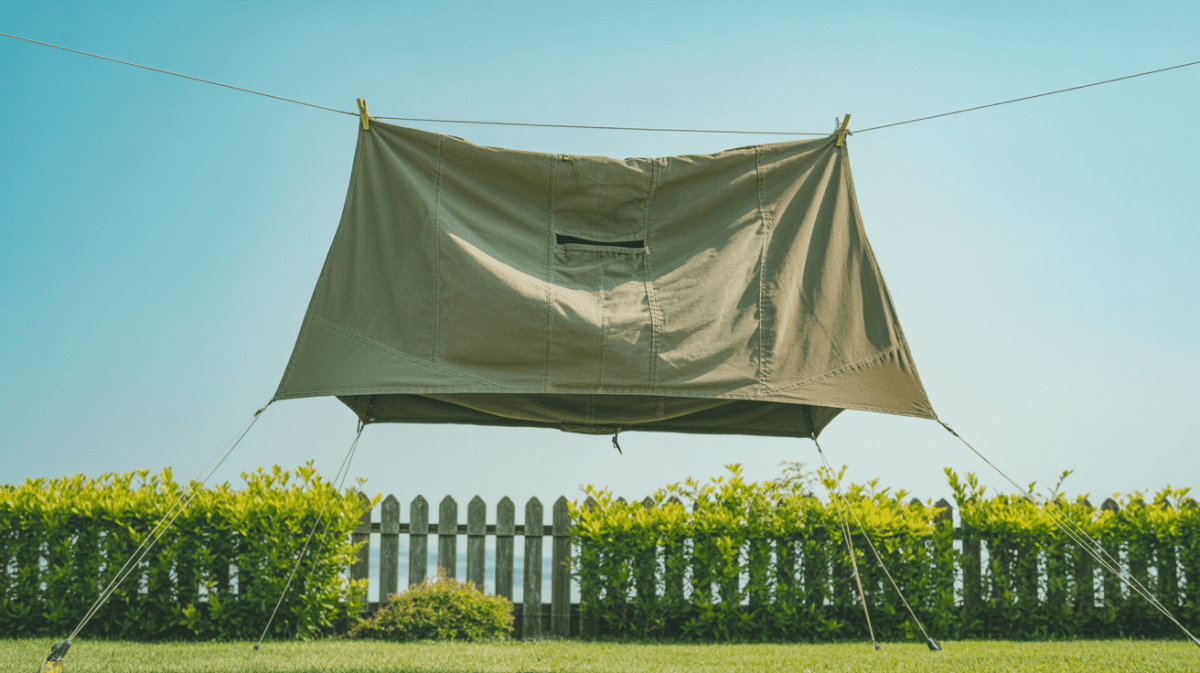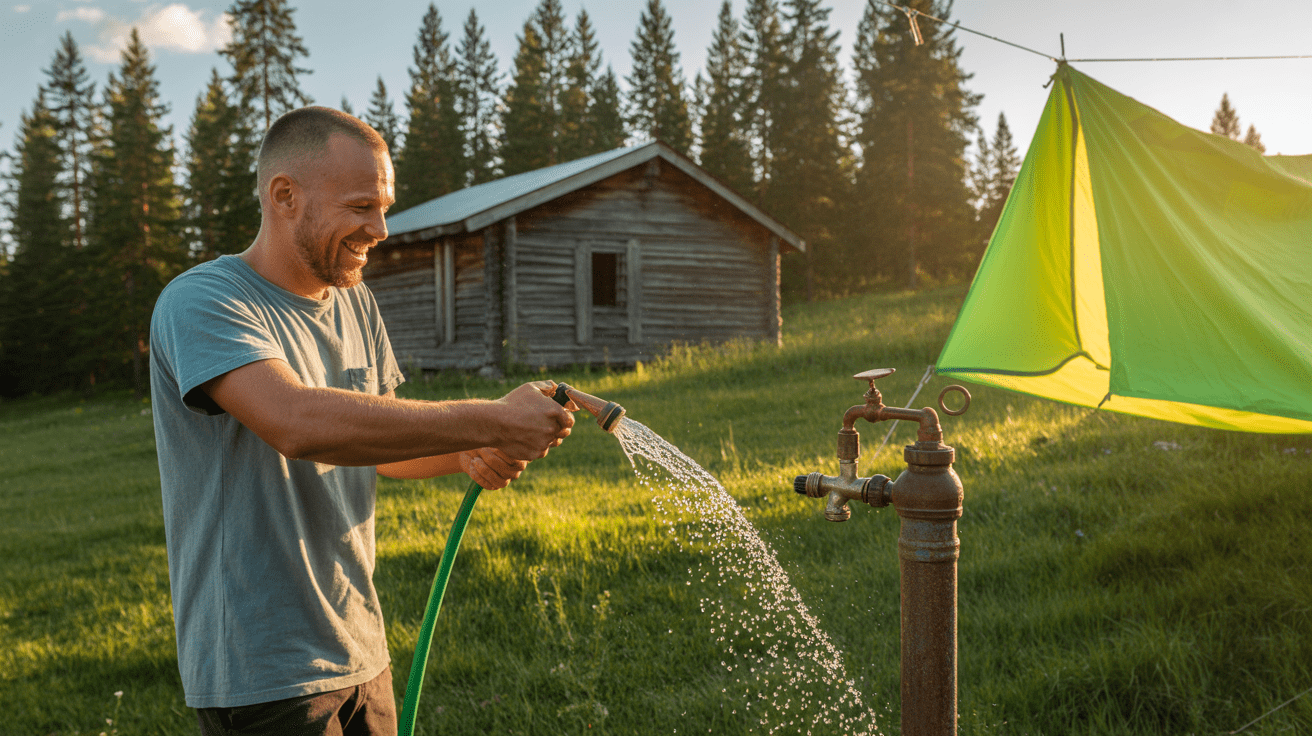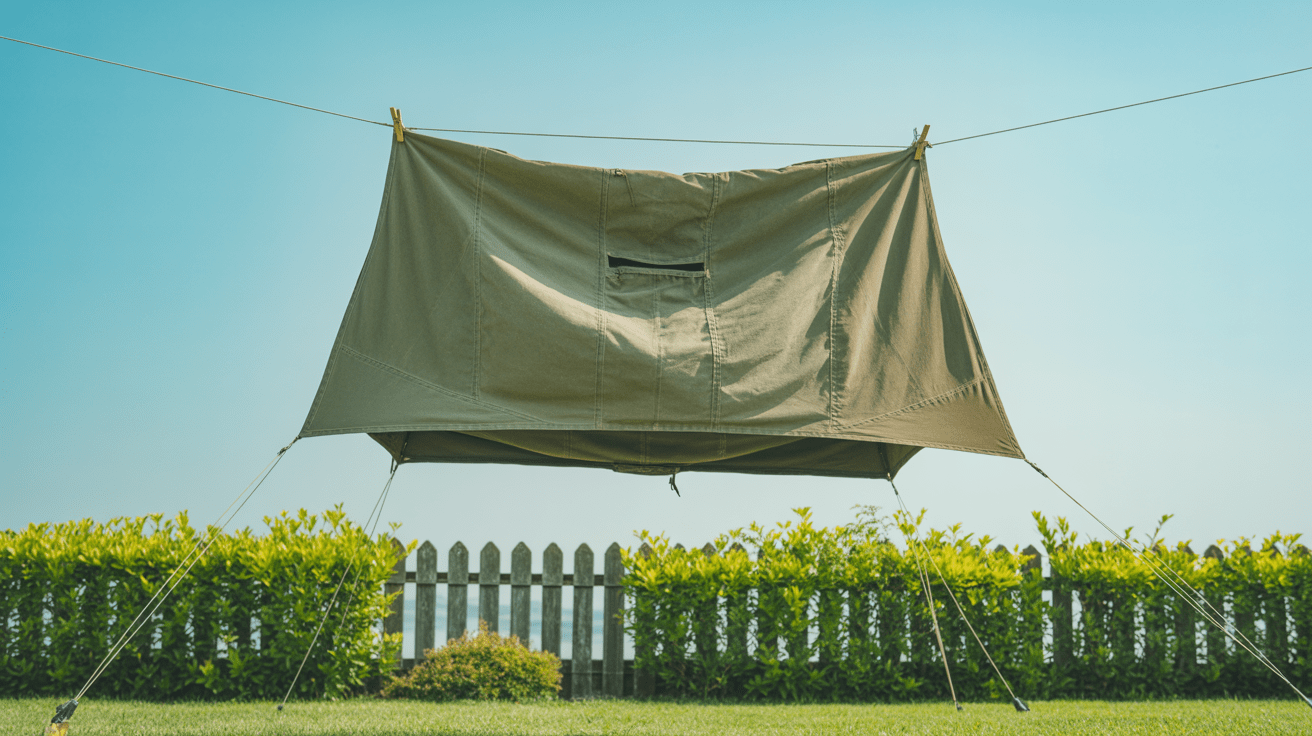Keep your tent looking great and ready for your next adventure:
When the thrill of the great outdoors calls, your camping tent becomes your sanctuary. But after a long weekend of adventure, it’s likely taken on dirt, debris, and perhaps an unintended whiff of campfire smoke. So, can you wash camping tents?
The answer is a resounding yes! Keeping your gear clean and fresh is essential not just for aesthetics, but also for longevity. In this article, we'll guide you through the essential tips and techniques to safely wash your tent without compromising its waterproof features or fabric integrity.
Whether you're a seasoned camper or a weekend warrior, understanding how to maintain your tent will ensure that every trip is as enjoyable as the last. Get ready to discover the secrets to caring for your camping gear and keep your outdoor experiences as refreshing as the views that await you!
Importance of Keeping Your Camping Tent Clean
Camping offers a unique opportunity to disconnect from the hustle and bustle of daily life and reconnect with the natural world. Your tent is not just a simple shelter; it’s your home away from home, a place where you can rest, recharge, and find solace amidst the wilderness. Keeping your camping tent clean is crucial for several reasons. Firstly, cleanliness contributes significantly to the longevity of your tent. Dirt, grime, and debris can degrade the fabric and zippers over time, leading to wear and tear that might necessitate costly repairs or replacements.
Secondly, a clean tent ensures a healthier camping experience. Accumulated dirt and moisture can harbor bacteria, mold, and mildew, posing significant health risks. These microorganisms thrive in damp, dirty environments and can cause respiratory issues, skin irritations, and allergies. By maintaining a clean tent, you create a safer and more enjoyable environment for yourself and your fellow campers.
Lastly, a clean tent enhances your overall camping experience. There's nothing quite like the fresh scent of clean gear when you unzip your tent to start a new adventure. It’s not just about looking good; it’s about feeling good and being prepared for whatever nature throws your way. When you take the time to clean your tent properly, you're investing in countless future adventures where your gear performs optimally.
Can You Wash Camping Tents? Understanding the Basics
The question of whether you can wash camping tents often arises after a few trips into the wild. The straightforward answer is yes, you can wash camping tents, but it must be done with care to avoid damaging the materials. Camping tents are constructed from specialized fabrics designed to be lightweight, durable, and weather-resistant. These materials require gentle handling to maintain their integrity and functionality.
Understanding the basics of tent cleaning involves knowing what you’re dealing with. Most modern tents are made from synthetic materials like nylon or polyester, often coated with polyurethane or silicone to enhance waterproofing. These coatings are sensitive to harsh chemicals and abrasive scrubbing, which can strip away the waterproof layer. Therefore, it’s crucial to use mild soaps and soft brushes when cleaning your tent.
Additionally, tent seams are usually sealed with tape or a liquid sealant to prevent water from seeping through. Vigorous washing or using high-pressure water can compromise these seals, leading to leaks. By familiarizing yourself with your tent’s materials and construction, you can choose the appropriate washing methods that will keep your tent in top shape without compromising its waterproof properties.
Materials Used in Camping Tents and Their Care
Camping tents are crafted from a variety of materials, each with its own unique care requirements. The most common materials include nylon, polyester, canvas, and mesh, each offering different benefits and challenges when it comes to maintenance. Understanding the properties of these materials will help you tailor your cleaning approach to ensure maximum durability and performance.
Nylon and polyester are the most widely used fabrics in modern camping tents due to their lightweight and robust characteristics. They are typically treated with waterproof coatings, such as polyurethane or silicone. These fabrics should be cleaned with a mild, non-detergent soap and lukewarm water to prevent damage to the coating. Avoid using bleach or fabric softeners as they can degrade the material and its protective layer.
Canvas tents, though less common, are cherished for their breathability and durability. They require a different cleaning approach. Canvas can be more resilient to scrubbing, but must be thoroughly dried to prevent mold and mildew growth. Use a soft brush and mild soap, and rinse with plenty of water. Ensure the tent is completely dry before storing it to avoid any moisture-related issues.
Mesh panels, commonly found in tent windows and doors, need gentle care to prevent rips and tears. Use a soft cloth or sponge with mild soap to clean mesh areas, being careful not to stretch or snag the material. With proper care tailored to each fabric type, your tent will continue to provide a reliable and comfortable shelter for many camping trips to come.
How to Prepare Your Tent for Washing
Before diving into the washing process, proper preparation is key to ensure an effective and safe cleaning. Start by choosing a suitable location for washing your tent. An open, flat area like a backyard or a clean, dry garage floor works well. Lay out a tarp or groundsheet to keep your tent off the ground and protect it from dirt while you clean.
Begin by shaking out your tent to remove loose dirt, leaves, and other debris. It’s a good idea to do this outdoors to avoid making a mess indoors. Next, inspect your tent for any damage such as rips, tears, or worn-out seams. Address these issues before washing, as cleaning can exacerbate existing damage. Small tears can often be repaired with tent repair tape, while more significant damage might require professional repair.
Once your tent is prepped and repaired, gather the necessary cleaning supplies. You’ll need a mild, non-detergent soap, a soft brush or sponge, and lukewarm water. Avoid using regular household cleaners, as they can be too harsh for the tent materials. Having all your supplies ready and within reach will make the washing process smoother and more efficient.
Methods for Washing Camping Tents
When it comes to washing your camping tent, there are several methods you can use, depending on the level of dirt and the tent material. Hand washing is the most recommended method as it allows for gentle cleaning and better control over the process. Start by setting up your tent partially or fully, depending on its size, to expose all areas that need cleaning.
Mix your mild soap with lukewarm water in a large basin or bucket. Using a soft brush or sponge, gently scrub the tent’s surface, focusing on heavily soiled areas. Be sure to clean both the inside and outside of the tent, as dirt and grime can accumulate in both areas. Pay special attention to zippers and seams, where dirt can get trapped and cause damage over time.
For stubborn stains or heavily soiled tents, soaking might be necessary. Fill a bathtub or large container with lukewarm water and add the mild soap. Submerge the tent and let it soak for about 30 minutes. After soaking, gently scrub the tent as described above. Rinse thoroughly with clean water to remove all soap residues. Avoid wringing or twisting the fabric to prevent damage.
Drying Your Tent: Best Practices
Proper drying is crucial to maintaining the integrity and longevity of your tent. After washing, it’s important to dry your tent completely before storing it. Any residual moisture can lead to mold, mildew, and unpleasant odors, which can be challenging to remove. Start by shaking off excess water and setting up your tent in a shaded, well-ventilated area.
Avoid direct sunlight when drying your tent, as prolonged exposure to UV rays can cause the fabric and waterproof coatings to degrade. Instead, find a shady spot with good airflow. If possible, pitch your tent fully to allow air to circulate through all areas. Alternatively, you can hang your tent on a clothesline or over a railing, making sure it’s evenly supported to prevent stretching.
Leave your tent to dry for several hours, checking periodically to ensure it’s drying evenly. Pay particular attention to seams and corners, where moisture can get trapped. Once the tent feels dry to the touch, leave it out for an additional few hours to ensure all hidden moisture is evaporated. Properly drying your tent will keep it fresh and ready for your next adventure.
Common Mistakes to Avoid When Cleaning Tents
Cleaning your tent is essential, but it’s equally important to avoid common mistakes that could damage your gear. One of the most frequent errors is using harsh chemicals or detergents. These substances can strip away waterproof coatings and weaken the fabric, resulting in leaks and a reduced lifespan. Always opt for mild, non-detergent soaps specifically designed for outdoor gear.
Another mistake is machine washing or drying your tent. The agitation and heat from washing machines and dryers can be too intense for tent materials, causing rips, tears, and shrinkage. Hand washing is the safest method to clean your tent, allowing for careful handling and thorough cleaning without risking damage.
Improper storage is also a common pitfall. Storing your tent while it’s still damp can lead to mold and mildew growth, which is difficult to remove and can permanently damage the fabric. Always ensure your tent is completely dry before packing it away. Store it in a cool, dry place, preferably in a breathable storage bag rather than a tight stuff sack, to allow air circulation and prevent moisture buildup.
Maintaining Your Tent Between Washes
In addition to regular cleaning, maintaining your tent between washes is crucial to keep it in top condition. After each camping trip, take a few minutes to shake out any dirt and debris before packing your tent. This simple step can prevent buildup and make the cleaning process easier when it’s time for a thorough wash.
Inspect your tent regularly for signs of wear and tear. Inspect seams, zippers, and fabric for any damage that may require attention. Promptly addressing small issues can prevent them from becoming larger problems that require more extensive repairs. Use repair tape or patches to fix minor tears, and consider resealing seams periodically to maintain waterproofing.
Proper storage is also crucial for maintaining a tent. Store your tent in a cool, dry place away from direct sunlight and extreme temperatures. A breathable storage bag is ideal, as it allows air circulation and prevents moisture buildup. Avoid compressing your tent for long periods, as this can damage the fabric and coatings. By taking these steps, you can extend the life of your tent and ensure it’s always ready for your next adventure.
Additional Tips for Long-Lasting Camping Gear
Beyond cleaning and maintenance, there are additional tips to ensure your camping gear lasts as long as possible. One key practice is always to use a groundsheet or footprint under your tent. This extra layer of protection reduces wear on the tent floor and provides an additional barrier against moisture and sharp objects.
When setting up your tent, choose your campsite carefully. Avoid rocky, uneven ground and clear away any debris that could puncture or damage the tent floor. Set up your tent in a shaded area to minimize exposure to UV rays, which can cause the fabric to degrade over time. Taking a few extra minutes to prepare your campsite can make a significant difference in the longevity of your tent.
Investing in quality gear and accessories can also pay off in the long run. High-quality tents, stakes, and guylines are designed to withstand the rigors of outdoor use and often come with better warranties and support. Additionally, consider using a tent-specific cleaner and waterproofing spray to keep your tent in optimal condition. By combining these tips with regular cleaning and maintenance, you can enjoy your camping gear for many years to come.
Conclusion: Keeping Your Camping Gear Fresh and Ready for Adventure
Camping is a wonderful way to connect with nature and create lasting memories. Your tent plays a crucial role in ensuring a comfortable and safe experience, so taking the time to clean and maintain it is well worth the effort. By understanding the materials used in your tent, preparing it properly for washing, and using gentle cleaning methods, you can keep your tent in excellent condition.
Avoiding common mistakes and taking proactive steps to maintain your tent between washes will further extend its lifespan. Proper drying, storage, and periodic inspections are all part of a comprehensive care routine that ensures your tent is always ready for your next adventure. Additional tips, such as using a groundsheet and selecting a good campsite, can also contribute to the longevity of your gear.
Ultimately, a well-maintained tent enhances your camping experience, providing a reliable and comfortable shelter no matter where your adventures take you. By following the essential tips outlined in this article, you can keep your camping gear clean and fresh, ensuring that every trip is as enjoyable and memorable as the last. So, pack your tent, head out into the great outdoors, and enjoy the beauty of nature with the confidence that your gear is ready for anything.
DISCLAIMER
This document is provided for general information purposes only and should not be relied upon as providing legal advice, technical, or specific operational guidance to the reader, whether as to the practices described in the document or the applicable legal requirements and regulations. bestcampingdeals.com expressly disclaims any responsibility for liability arising from or related to the use or misuse of any information in this document.
DISCLAIMER
This document is provided for general information purposes only and should not be relied upon as providing legal advice, technical, or specific operational guidance to the reader, whether as to the practices described in the document or the applicable legal requirements and regulations. bestcampingdeals.com expressly disclaims any responsibility for liability arising from or related to the use or misuse of any information in this document.






